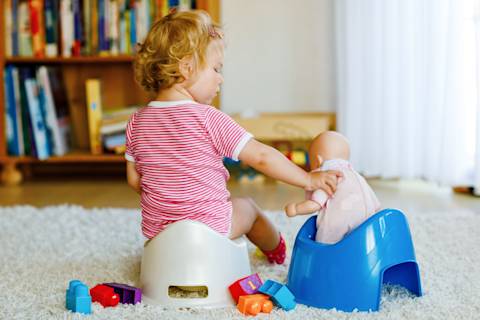Tu hijo necesita tu ayuda para comprender el comportamiento propio. Las técnicas de disciplina positiva pueden ayudarte a guiar a tu hijo hacia buenos comportamientos mientras fortaleces tu vínculo con él y creas un respeto mutuo.

La disciplina positiva se enfoca en enseñar y guiar a los niños sobre qué comportamiento se espera de ellos. Los estudios muestran que los niños aprenden mejor cuando se sienten seguros y conectados en sus relaciones. Concentrarte primero en solidificar estas relaciones pone a los niños en una mejor posición para seguir las normas establecidas. La disciplina positiva se trata de mantener los límites de manera tranquila cuando los niños se portan mal, y es una de las partes del enfoque de crianza positiva, el cual puedes leer en nuestro artículo anterior.
Si deseas incorporar disciplina positiva en tu enfoque de crianza, aquí hay cuatro métodos que puedes probar:
Desviar: Si tu hijo se porta mal o hace algo que es potencialmente peligroso, trata de distraerlo hasta que se haya calmado. Anímalo a jugar con un juguete que le gusta. Muéstrale algo interesante a su alrededor. Los períodos de atención de los niños son cortos, entonces redirigirlos a otra actividad puede ayudar a evitar un berrinche. Cuando estén más tranquilos, puedes ayudarlos a comprender sus sentimientos y hablar sobre las formas en que podrían comportarse apropiadamente en el futuro.
Recompensa y alaba el buen comportamiento: A los niños les encanta tener la atención de su cuidador. Al alabarlos cuando cumplen con tus expectativas, los estás animando a repetir ese buen comportamiento.
Establece expectativas y consecuencias claras antes del mal comportamiento: Comunícate constantemente con tu hijo sobre las reglas que esperas que sigan. Explícale con calma y firmeza las consecuencias si no se porta bien, y prepárate para cumplir con esas consecuencias cada vez.
Cambie los tiempos de penitencia por tiempos de actividad: Si encuentras que tu hijo no responde bien a los tiempos de penitencia, trata de hacer actividades juntos. En vez de mandar a tu hijo solo en la esquina, intenta leer algo juntos o hacer una actividad simple y relajante. Cuando tu hijo se haya calmado, hablen de las opciones que puede tomar la próxima vez y anímalo a disculparse por su comportamiento.
La comunicación clara, constante y tranquila con tu hijo sobre tus expectativas es la base de la disciplina positiva. Es normal que los niños traten de traspasar esos límites, pero con el tiempo, les podrás enseñar las habilidades importantes de disciplina que disminuirán el mal comportamiento.







